The Trick to Adding a Rooster to your Hen House
Adding a rooster to an established coop can seem a bit intimidating. This guide will walk you through how to safely add a rooster to your hen house so everyone in the flock is safe and adjusted.
Raising Chickens is easier when you have a rooster watching over them and this guide will show you how to add one to your flock.
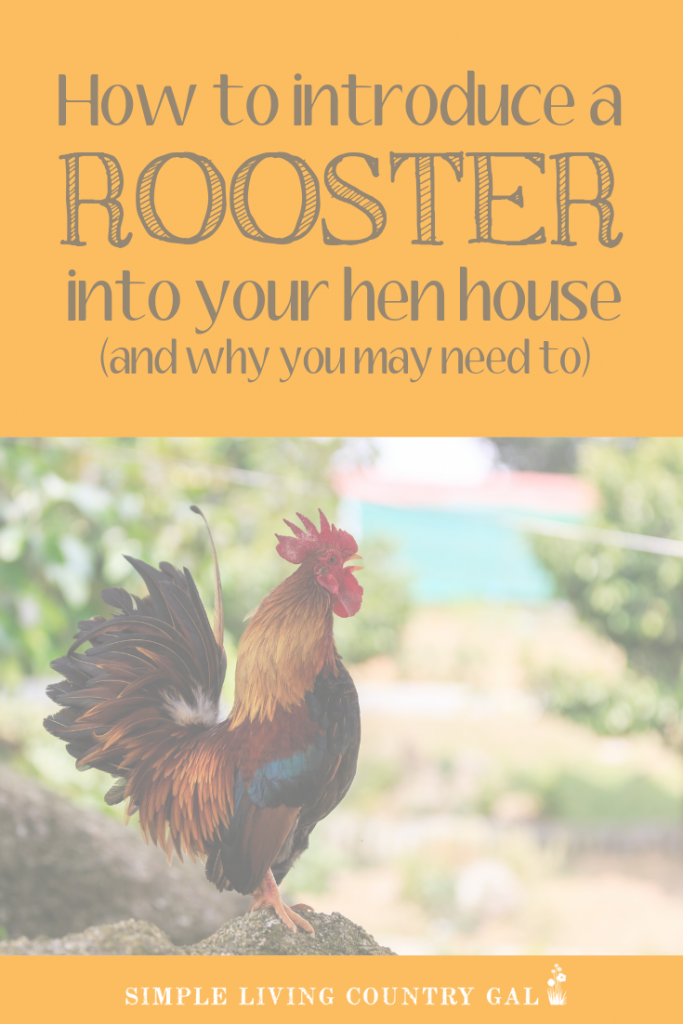
There is nothing I love more than eating a meal of freshly scrambled eggs that came right out of our henhouse. I always planned to have chickens mainly because eggs were and still are a food I enjoy daily.
From a very young age, I longed to have a homestead—one with a garden, chickens, ducks, and even goats. Years ago when I first started out, I began with a large vegetable garden./ The next addition on the list was chickens.
I ordered my first batch of chicks and dove in head first. All in all things adjusted relatively well and true to my nature, I learned more by doing than I did by reading.
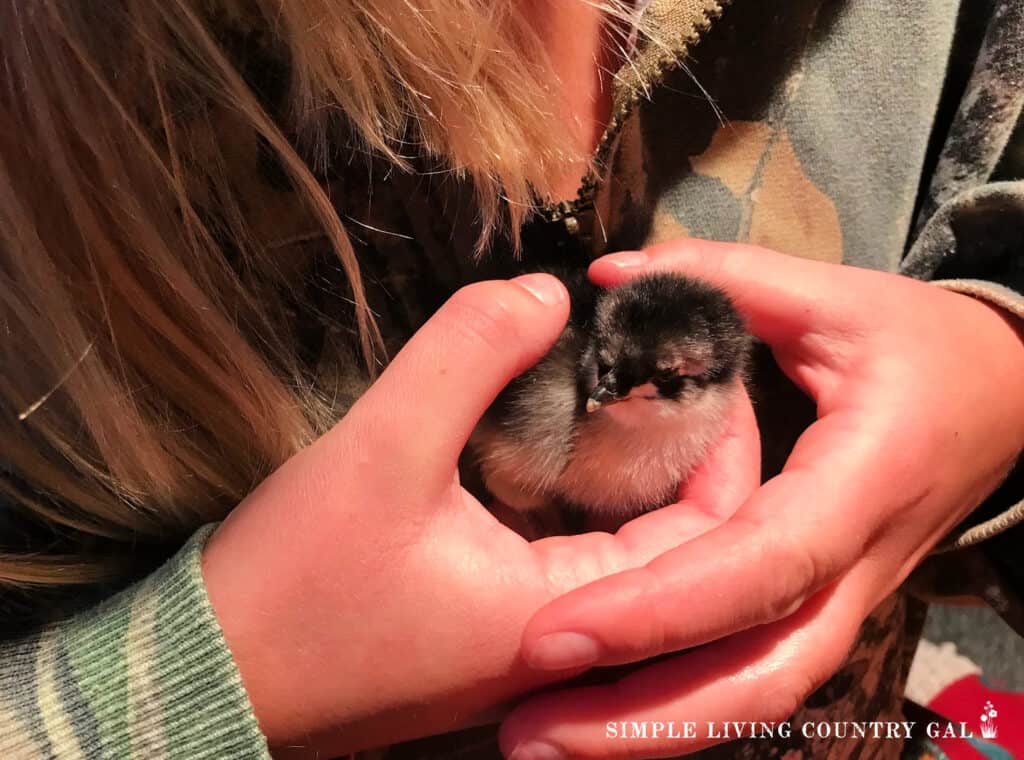
Chickens, Hens Particularly, are Vulnerable.
I quickly learned that first year that chickens are quite vulnerable and tend to be focused more on what they are doing rather than where they are. They usually do not notice the danger until it is too late, and that may explain why chickens go missing from coops every day.
After a neighbor lost a few chickens to a hawk, I decided to get some protection for my birds, and that meant adding a rooster to my established flock of chickens.
Many times, roosters get a bad rap. People see them as an aggressive unnecessary part of the chicken coop, and for the longest time, I agreed with them. My first experience with a rooster was at a neighbor’s home. We were going down to visit her goats, and she greeted me at the end of the driveway with a warning.
“I just want to warn you, we have a rooster who is MEEEEEE-AN.” Dragging the word mean out like it had 27 “e’s” in it.
It made me nervous but not scared until I met him. She did not exaggerate at all! As I got out of my car and made my way to the barn, he took one look at me and charged with wings out and squawking the entire way.
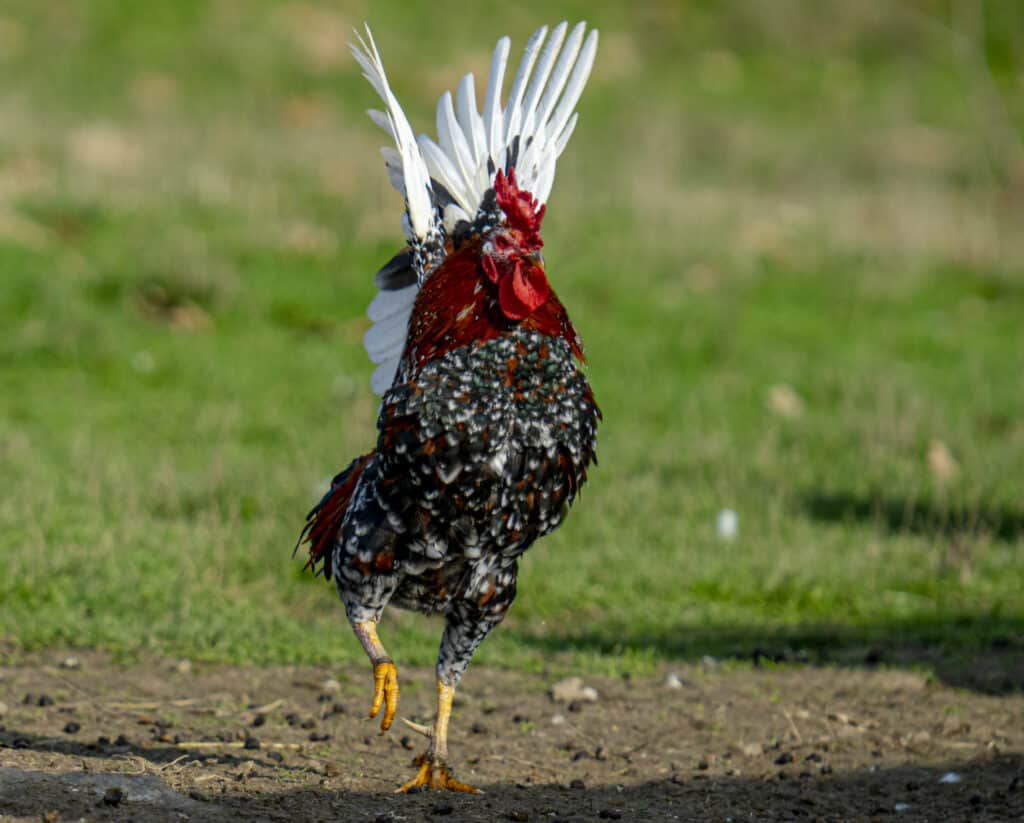
It was at that moment that I decided never to own a rooster.
Later, after I had a flock of my own and learned the advantages of having a rooster, such as protection 24/7, I changed my mind. I did not realize back then that my friend’s charging rooster was his way of protection.
Roosters act as a warning system vocally but will also attack when there is danger that they feel is threatening their flock. They have this instinct to warn and protect their hens and will do that very thing at the sign (any sign) of what they believe is a danger.
This includes squawking, flapping their feathers, and even jumping and attacking with their clawed feet.
What are the benefits of having a rooster?
There are many reasons to have a rooster in your coop:
- Protection – Roosters will attack anything that threatens the flock.
- Alert – Roosters will squawk to alert anyone around there is a threat.
- Call – Roosters will call out to any hens out of the coop to return for nightfall. This can be quite helpful, especially if you free-range your hens.
After a few seasons of raising our own chickens, we decided to get a rooster. Lucky for us our first rooster was a sweetheart, and I never once had a problem with him with any aggression towards me.
The same did not hold true with my youngest son. For some reason, our first rooster did not care for him at all and would come running just as soon as he saw him.
Since I had a fondness for Bubba, our rooster, and I did not want to get rid of him, we instead just told our teenage son to stay back. Now, had my son been younger I probably would have considered finding a new home for that first rooster because aggressive roosters can be dangerous.
How do roosters attack?
A rooster will attack with its feet first by “flying” at its target with feet outstretched, using them to push, grab, and stab. They will then jump, flapping their wings using their beaks as well to inflict injury that will, hopefully, chase off the predator.
The entire time this is happening, a rooster squawks loudly to alert the rest of the flock to stay away. This, in turn, alerts you so you can quickly get out to intervene.

How to Safely Add a Rooster to Your Hen House
If you have an already established flock of hens and are thinking of adding a rooster, there are a few things you can do to make that transition more comfortable.
Chickens do not take kindly to new birds being added to their flock. If you were to just add a rooster in, there is a chance they will hen-peck him sometimes a little and, unfortunately, sometimes a lot.
This hen-pecking is necessary to establish the hierarchy of the coop. After all, that is where the term “pecking order” came from.
If you are new to chickens, this can be pretty brutal to witness. Chickens do not realize the rooster is there to protect them, and I have seen roosters pecked, some severely, from hens in a flock. Just because henpecking is normal behavior for chickens does not mean you need to allow it, and luckily there are things you can do to make the adjustment easier on everyone.
READ: HOW TO DISCOURAGE HENPECKING IN YOUR FLOCK
I have found a few tips that have worked for us when adding new chickens to an established flock. These tips work for new young hens, a rooster, even when you are re-introducing a recovered hen that needed to be removed because of illness or an injury.
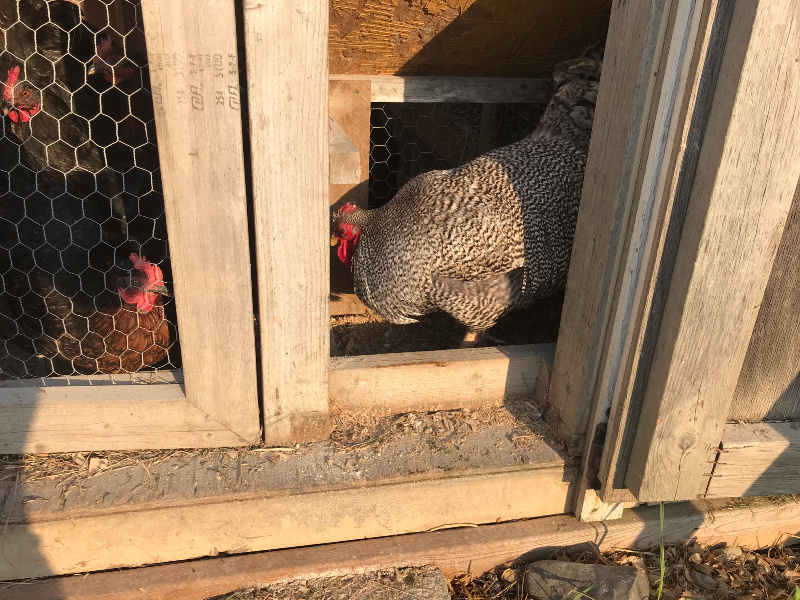
Step #1. Slow and Steady
I have found that patience is the key when it comes to chickens or any animal, for that matter. Rather than tossing my new rooster in and hoping for the best, we decided to build a holding area that sat within the pen of our coop—a protected space where we could put our rooster so he could get used to the hens, and they, in turn, get used to him.
My Hubby built a small room that extended into the hen house and opened up to the outdoors. It has a slanted solid roof to discourage the hens from roosting on it at night. (Chickens will do anything to get up off the ground while sleeping.)
The walls are made of chicken wire allowing the hens and the rooster to easily And chicken see, smell, and hear each other.
We have since named this extension, the chicken condo, and we have used it successfully for years. If you do not have a way to add on a room such as this you can use a small dog crate and simply set it inside the coop at night for your rooster to sleep in.
This, again, allows the rooster to feel part of the flock giving everyone time to adjust to the other.
Step #2. Let Them Explore
This is easier if you are free-ranging your chickens. If you are not allowing your flock to free-range, skip over this part and move on to step #3.
We allowed our rooster time to get the “lay of the land” so he could learn what was a safe place to scratch and what was not. Giving him time to explore the area helped him feel more confident in his surroundings.
Each night, I would call our new rooster in, and he knew right off where his safe place was. He would walk into his little room, and we would close him inside so he would be safe.
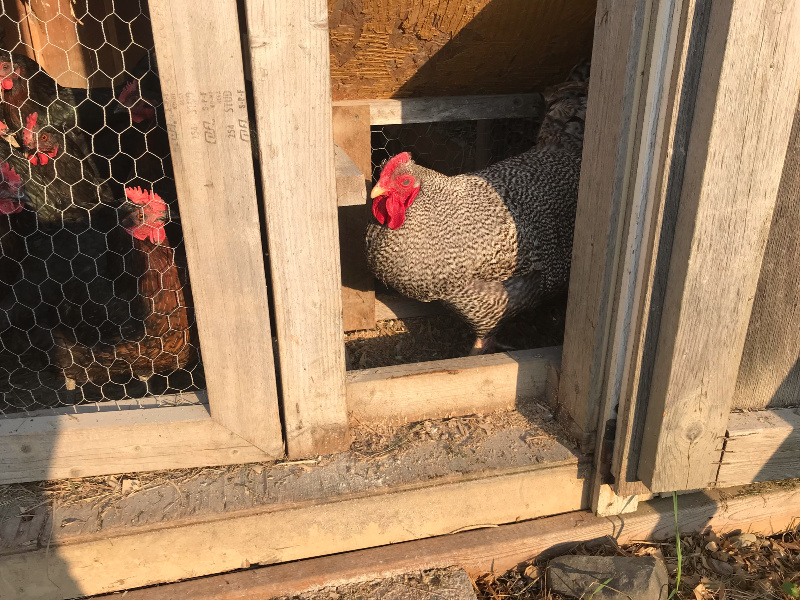
As time went on, the hens became used to him being there and actually went up to greet him each evening.
Step #3. Take Your Time
As I mentioned before, the key to this working is to not rush it. Take your time and allow both sides to become accustomed to each other. We took a full week before we decided to add our rooster in.
For me, a calm transition was incredibly important.
Few people know that chickens have a cannibalistic nature. Once they taste some blood, they will peck and peck and peck to get more of it. Not only that, the red color of blood really calls to them, making them want to peck even more.
For that reason, preventing blood from the get-go is always my main objective.
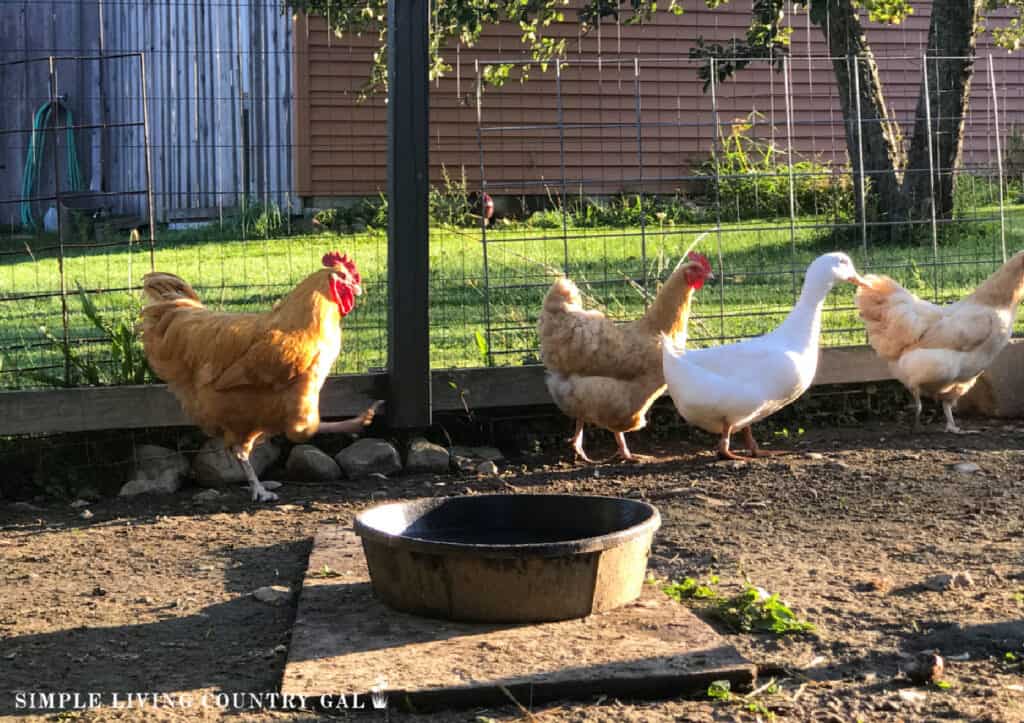
Step #4. Make the Move at Night
I learned this tip years ago from an old farmer, and it works like a charm.
When a hen is perched up on the roost after dark, she will allow you to do just about anything. Pick them up, tag them, clip their wings, and move them around. The reason for this is the fact that chickens have horrible night vision.
This little tip is helpful if you ever need to treat or do maintenance on your hens.
Chickens are fearful of predators at night, and for good reason, given their poor vision in the dark. Because of this, they prefer to be up off the ground on a chicken roost where they feel safe. Couple that with their inability to see well in the dark, and you have the perfect time to do any hen maintenance or add a new member to the flock.
Chickens also have very short memories. If you add a new hen at night they will wake up in the morning assuming she was there the entire time.
Make your move at night and see just how easy it is.
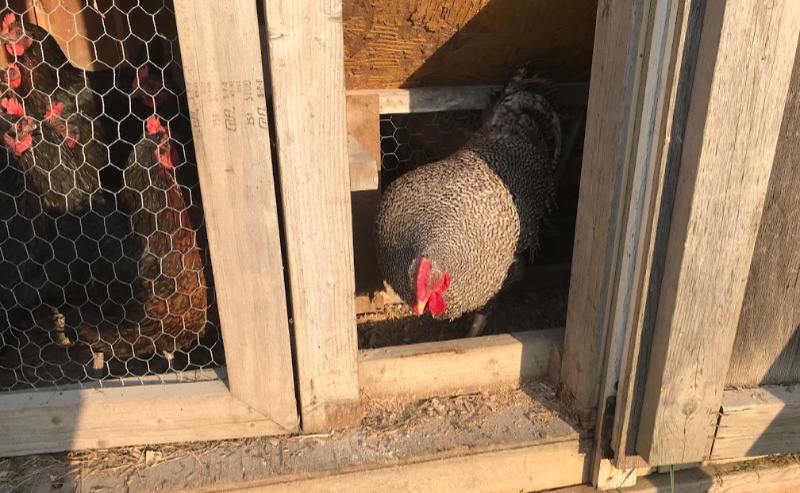
Step #5. Watch for Behavior Issues
This step is important simply because we cannot assume anything when it comes to animals. Watch the flock for signs of aggression so you can stop it before it gets out of hand. If you see feathers missing from your rooster, then you may need to step in again.
Remember, it is easier to stop henpecking before it gets dangerous for the rooster because once a chicken tastes blood, she can be pretty ruthless. I recommend watching closely over the flock for a few days so you can step in if you see a situation that is close to becoming dangerous.
More often than not, a flock will work through hen pecking on their own, but you can do a few things to stop it, if necessary.
What can I do to keep hen-pecking from happening?
- Allow for more than one access to food and water. Aggression tends to happen when food is involved. Give multiple locations to allow a place for your rooster to eat in peace.
- Make sure you have plenty of room in your coop. A good rule of thumb is 2-3 square feet per chicken in the coop and 10 square feet in the outside run.
- Give distractions. Treats, scraps from your kitchen, and even meal worms will help to keep your flock from getting bored.
- Put up obstacles like branches, rocks, or logs. This will not only give your rooster a place to get out of sight from an aggressive hen but will give your entire flock a place to scrounge for bugs.
Remember, slow and steady is the key to this system working because if you rush it, you may end up having a bigger problem. Take things slowly, and you will create a healthier and happier environment for your chickens which will, in turn, keep everyone safer.
More often than not, bullying is a one-time occurrence, but again, you will want to watch closely for clues and signs of a problem. This way, you can stop anything before it gets out of hand.
Are roosters loud?
This is a question I get asked often and I wanted to add it in here.
In the morning, roosters like to announce, what seems like to the entire world, that morning has come. This might be a good reason to refrain from putting your chicken coop right below your bedroom window.
Sure, a morning call can be nice, but roosters are not a one-and-done animal. They will announce morning has come FOR HOURS and, in some cases, the entire day. You will need to keep this in mind before adding a rooster to your flock, especially if you live in a subdivision or have close neighbors.
Having a rooster around to protect our flock has been a decision that has worked incredibly well. He has kept everyone safe and on many times has alerted us to a situation that needed our quick attention.
Our animals rely on us for many things, not only for food and fresh water but also for safety. With a rooster, you will give your chickens the protection they need by having a living alarm system around that will alert you to a problem before you see it.
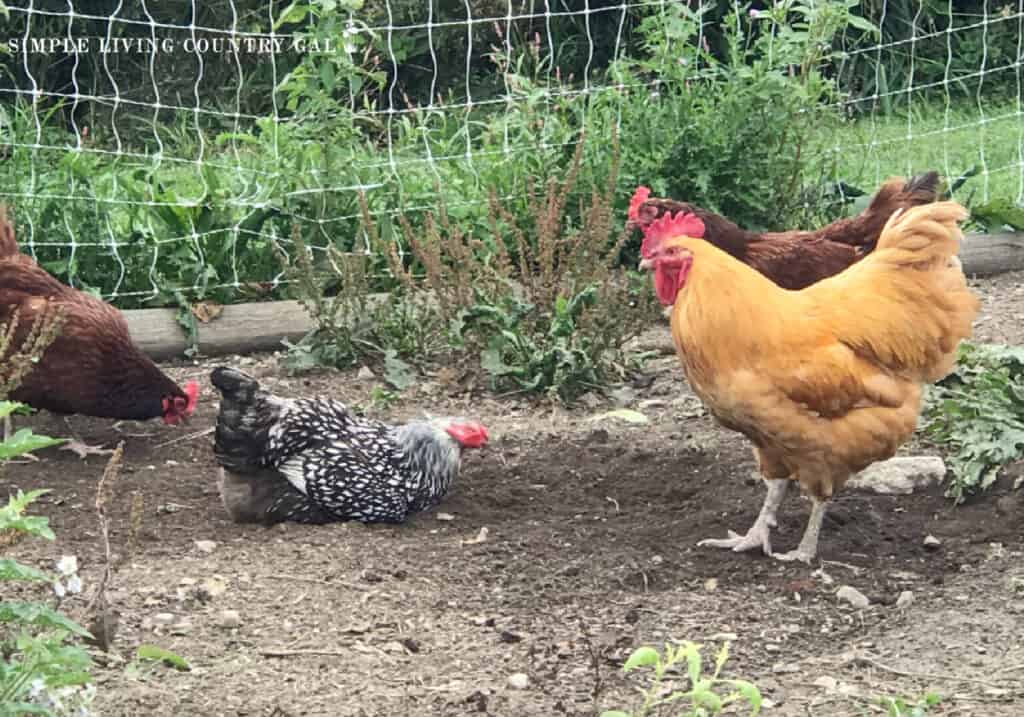
Now that you know the safe way to add a rooster to your hen house, I hope you will get started and give your flock the additional protection they need to keep laying those amazing and delicious eggs.

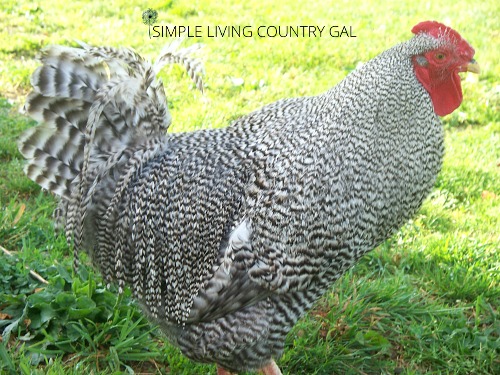
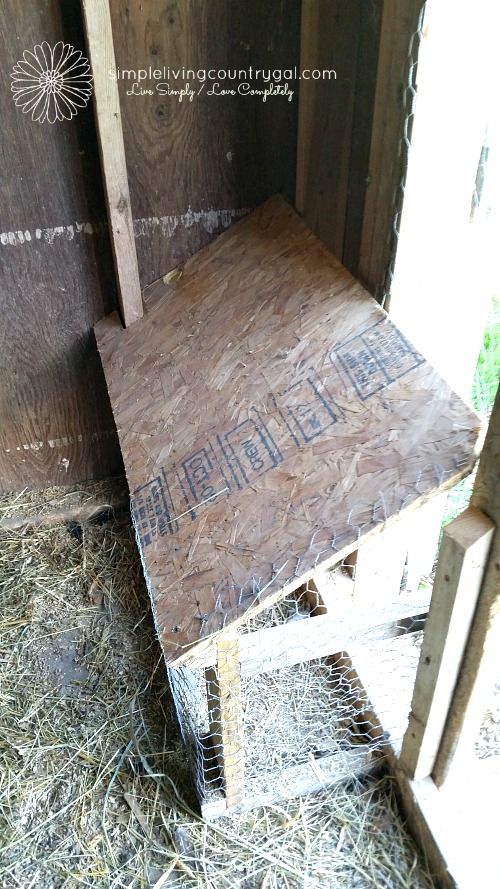
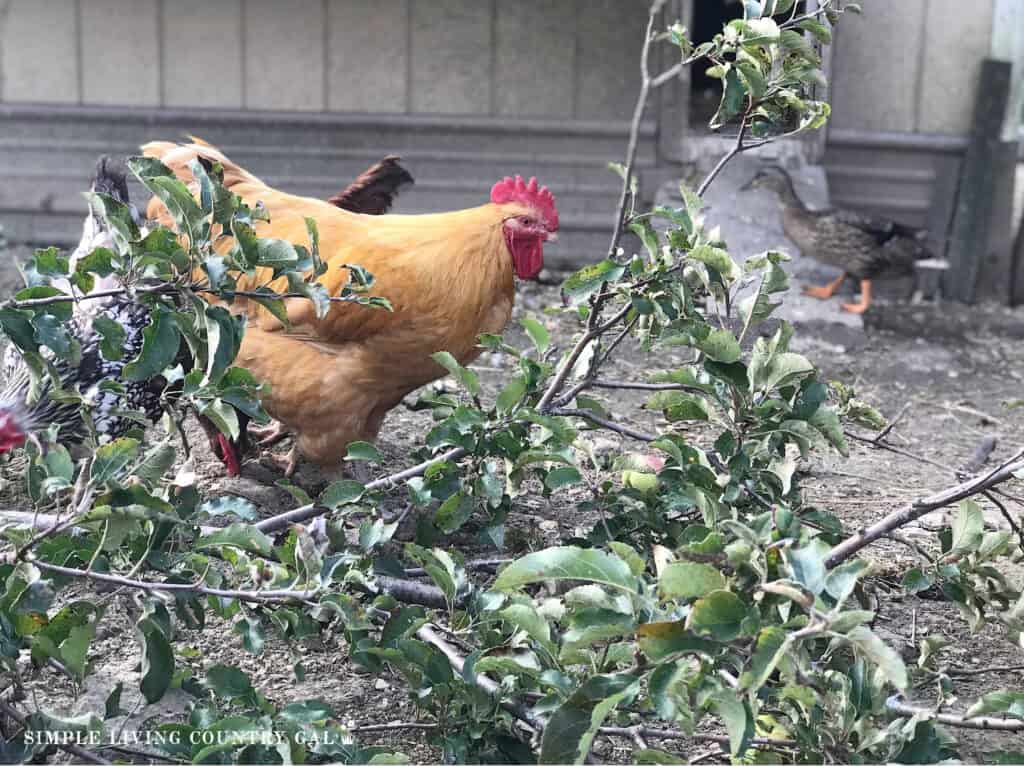
Thanks for info,am about to add a rooster
May be a silly question but how is Bubba safe at night in his little room? Is he not exposed to predators?
Hi Debora,
No, Bubba is not exposed. When we close the main coop door at night that same door acts as his room door as well. Oh heavens, does that make sense? 🙂 There is enough space in his room for 5 hens comfortably but he scoots back in the corner to sleep. Every morning he greets me at the door with a loud crow, scares me every time and I know it’s coming!
I love these great informational readings. Still contemplating chickens. Our fenced country back yard is a bit under an achre. They would my only critters. In your opinion, would a dog run work for an outside run, plus smaller chicken wire to keep out foxes and raccoons.
We have lots of hawks and black vultures around and I thought the covered dog runs might prevent these raptors from chicken dinners.
Thanks so much
Brenda Buzzell
Hello, Brenda!
If you have an issue with hawks I think a run with a “lid” is the best way to go. You will keep predators out, the chickens in and still allow sunlight to filter through. In our area, hawks are a big problem for those with chickens so if you don’t have a dog to help with preventing attacks, then a run with a top is the perfect solution!
Good Luck,
Tracy Lynn
Thank you for the very helpful advise and all your kind insights , we are getting a Rooster tomorrow and it was very helpful we have 4 Rhode Island Red hens and are getting a Swedish Flower rooster
Good luck with the new rooster! They do get a bad rap, but I love having one around to protect my ladies.
Tracy Lynn
We had great luck with the Pinless Peepers Chicken Glasses for a particularly dominant hen. The hen was pecking our Polish until it was bleeding and bald–we worried she would kill the Polish. After putting the chicken glasses on the pecker, the Polish regained all her feathers!
wow, love it!